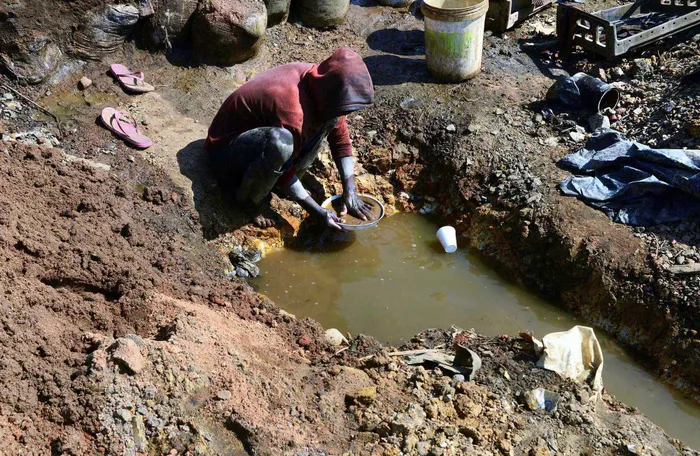The devastating environmental impact of illegal mining in South Africa

The UN Office on Drugs & Crime report shows how illegal mining is damaging the environment with banned or hazardous chemicals.
Image: Boxer Ngwenya/ANA Archives
A new report has shown how illegal mining could damage the environment with banned chemicals, waste dumping and deforestation.
The report - conducted by the UN Office on Drugs & Crime - found that the use of banned or hazardous chemicals is one of the most damaging environmental impacts of illegal mining.
Miners deploy these chemicals during the extraction and separation processes.
For example, mercury is still widely used in gold mining, especially in artisanal and small-scale operations.
According to the report, this causes irreversible damage, contaminating soil and water sources, affecting not only the workers who come into direct contact with it but also nearby communities and biodiversity along river systems.
The report states that while legal mining operations are subject to regulations intended to minimise harm, illegal mining bypasses these safeguards, often resulting in severe environmental degradation.
“Illegal mining directly contributes to environmental destruction by clearing forests to access mineral deposits. This is especially harmful when it occurs in protected areas, where it leads to the degradation of sensitive ecosystems and accelerates biodiversity loss,” read the report.
All mining operations produce large volumes of solid waste. Legal operations usually deploy specialist facilities and equipment to prevent contamination of the surrounding soil and water. Illegal operations lack such systems, often resulting in untreated waste being dumped into water bodies or directly onto land, stated the report.
The office added that these illegal operations have no plan for the land after mining has finished, leaving behind damaged habitats.
The report highlighted that the absence of restoration efforts leads to further impacts, including increased soil erosion, heightened vulnerability to natural disasters, and desertification, particularly in water-stressed areas.
In South Africa, these activities also lead to the creation of sinkholes, underground fires, and the destruction of ecosystems, with long-lasting consequences.
The effects also include sabotaged pipelines that contaminate the environment and illegal water usage.
This also poses significant dangers, including safety hazards, and social problems such as increased crime and exploitation. It also undermines the legal mining industry and the country's economy.
With almost 6,000 abandoned mines in South Africa, these locations have become exploitation hotspots. Syndicates are believed to serve as intermediaries, purchasing mined minerals from miners at cheap rates and then selling these on the illicit market for much higher profits, using force, intimidation, and violence to carry out these activities.
The Department of Mineral Resources and Energy (DMRE) previously said it was working to address these challenges through various initiatives, including law enforcement, community engagement, and environmental management.
Asked what has been done so far, spokesperson Solomon Phetla said the department was working on responses, but did not respond.
In September 2023, the SAPS arrested 68 suspects in connection with illegal mining activities. Among them, two were nabbed for human trafficking, while two others were charged for possession of unlicensed firearms with ammunition. Eight more were nabbed for kidnapping.
According to the report, illegal mining and trafficking are often enabled by a combination of fraud, corruption, and money laundering. This allows illegally sourced and trafficked metals and minerals to enter global markets.
“Organised criminal groups, corporations, and traders play key roles in this process by exploiting legal loopholes and weak regulatory oversight to conceal the origin of illegal minerals and metals,” the report stated, adding that gold is a high-risk commodity, frequently used as a tool for money laundering owing to its high value, ease of transport, and because it can be quickly sold or exchanged for cash in many parts of the world.
Traders often act as intermediaries, linking illegally sourced gold with formal markets by using falsified documentation to disguise its origin.
Common tactics include declaring gold as recycled, misreporting its country of origin, forging export permits, and bribing officials to obtain mining concessions or avoid legal consequences related to environmental, labour, or safety violations.
The report said these corrupt practices can infiltrate the entire supply chain, and the risk of fraud and bribery often extends to public officials at local, regional, and national levels.
“Money laundering is also a central component of illegal mining and trafficking. A common tactic involves the use of front or shell companies to facilitate the trade of illegally sourced gold, finance the purchase of banned substances such as mercury, and launder profits. These mechanisms blur the boundaries between legal and illegal operations, posing serious challenges for enforcement.”
manyane.manyane@inl.co.za
Related Topics: